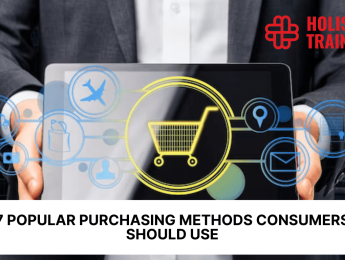- Table of Contents
- Introduction
- How Has Digital Transformation Redefined Sales?
- 1. Customer Empowerment and Engagement
- 2. Data-Driven Insights
- 3. Automation and Efficiency
- 4. The Rise of E-commerce and Online Marketplaces
- 5. Social Selling
- 6. Mobile Commerce
- 7. Personalization at Scale
- 8. Shift to Service-Oriented Selling
- What Are the Key Components of Digital Selling?
- 1. Customer Relationship Management (CRM) Systems
- 2. Content Marketing
- 3. Social Media
- 4. Email Marketing
- 5. Search Engine Optimization (SEO) and Search Engine Marketing (SEM)
- 6. Analytics andData Analysis
- 7. Mobile Optimization
- 8. E-commerce Platforms
- 9. Video Conferencing and Virtual Sales Meetings
- What Role Does Data Analytics Play in Modern Selling?
- 1. Enhanced Customer Insights
- 2. Personalized Marketing and Sales Strategies
- 3. Predictive Analytics for Forecasting and Trend Analysis
- 4. Optimized Pricing Strategies
- 5. Improved Sales Performance and Efficiency
- 6. Customer Experience and Satisfaction
- 7. Agile Decision-Making
- What Are the Challenges of Selling in the Digital Age?
- 1. Overwhelming Competition
- 2. Rapidly Changing Consumer Behaviors
- 3. Data Privacy and Security Concerns
- 4. Technology Adoption and Integration
- 5. Maintaining Personal Connections
- 6. Digital Skill Gaps
- 7. Measuring and Analyzing Performance
- 8. Adapting to Multichannel and Omnichannel Strategies
- 9. Customer Retention in a Digital World
- 10. Keeping Up with Digital Trends and Technologies
- What Future Trends Will Shape Selling in the Digital Age?
- 1. Artificial Intelligence and Machine Learning
- 2. Voice Commerce
- 3. Augmented Reality (AR) and Virtual Reality (VR)
- 4. Social Commerce
- 5. Sustainability and Ethical Selling
- 6. Blockchain Technology
- 7. Direct-to-Consumer (D2C) Models
- 8. Subscription and Service-based Models
- 9. Data Privacy and Security
- 10. Omnichannel and Unified Commerce
- Conclusion
Introduction
The rise of the digital age has fundamentally transformed the landscape of selling, making it essential for businesses to adapt to the new norms of customer interaction, engagement, and transaction. Digital tools and platforms have shifted the power dynamics in favor of informed and connected consumers, demanding a more personalized, efficient, and data-driven approach to sales. This article explores how digital transformation has redefined sales, detailing the key components of digital selling, the pivotal role of data analytics, the challenges faced by businesses, and the strategies employed by successful brands to navigate the digital marketplace. Additionally, it looks ahead to the future trends poised to shape selling in the digital era, highlighting the ongoing need for innovation, adaptability, and customer-centricity in the digital sales domain.
How Has Digital Transformation Redefined Sales?
The digital transformation has revolutionized sales, altering how businesses connect with customers, understand their needs, and deliver value. This seismic shift has not only changed the tools and platforms used for selling but has also redefined the strategies and processes underlying sales activities. Here’s how digital transformation has redefined sales in various ways:
1. Customer Empowerment and Engagement
Digital channels have empowered customers with easy access to information about products, services, and competitors. Today’s consumers are well-informed and expect personalized interactions. Sales strategies now focus on engaging customers through their preferred digital mediums, offering tailored content and solutions that meet their specific needs.
2. Data-Driven Insights
The digital age has brought about an explosion of data, offering unprecedented insights into customer behavior, preferences, and trends. Sales teams leverage big data analytics to refine their sales strategies, target their messaging more effectively, and predict future buying behaviors. This data-driven approach enables businesses to make informed decisions and optimize their sales outcomes.
3. Automation and Efficiency
Sales automation tools have transformed the sales process, making it more efficient and scalable. From lead generation and customer relationship management(CRM) systems to automated email marketing and social media campaigns, these tools reduce manual tasks and allow sales teams to focus on higher-value activities. Automation also ensures consistent customer experiences and follow-ups, crucial for building long-term relationships.
4. The Rise of E-commerce and Online Marketplaces
Digital platforms have expanded the reach of businesses, allowing them to sell products and services directly to consumers globally. E-commerce and online marketplaces have become essential sales channels, offering convenience to customers and opening new markets for businesses. This shift has necessitated the adoption of digital marketing and SEO strategies to attract and convert online customers.
5. Social Selling
The proliferation of social media platforms has given rise to social selling, where salespeople use networks like LinkedIn, Twitter, and Facebook to connect with prospects, share relevant content, and build relationships. This approach is more subtle and focuses on establishing trust and authority in a domain, leading to higher conversion rates compared to traditional sales tactics.
6. Mobile Commerce
The ubiquity of smartphones has made mobile commerce a critical component of digital sales strategies. Businesses optimize their websites and apps for mobile devices to offer seamless shopping experiences. This includes mobile-friendly designs, easy navigation, and secure payment options, catering to the on-the-go lifestyle of modern consumers.
7. Personalization at Scale
Advancements in technology have enabled businesses to personalize their sales efforts at scale. Using AI andmachine learning, companies can deliver personalized recommendations, offers, and content to individual customers across various touchpoints, enhancing the customer experience and increasing sales conversions.
8. Shift to Service-Oriented Selling
The digital age has seen a shift towards selling solutions and outcomes rather than just products. Businesses focus on understanding the customer’s broader challenges and offering services that deliver value over time. This service-oriented approach often involves ongoing engagement and support, fostering deeper customer relationships and recurring revenue streams.
What Are the Key Components of Digital Selling?
Digital selling represents a modern approach to sales that leverages digital tools and channels to engage potential customers, build relationships, and close deals. It's a comprehensive strategy that encompasses various components, each playing a crucial role in the effectiveness of a digital sales approach. Here are the key components of digital selling:
1. Customer Relationship Management (CRM) Systems
CRM systems are at the heart of digital selling, enabling businesses to manage customer data, interactions, and history in one place. These platforms help sales teams to track leads, nurture customer relationships, and personalize their sales efforts based on detailed insights into customer behavior and preferences.
2. Content Marketing
Content is a critical component of digital selling, used to attract, engage, and educate potential customers. Effective content marketing involves creating and sharing valuable content that addresses the needs and interests of the target audience. This can include blog posts, videos, whitepapers, and social media content, all designed to establish thought leadership and build trust with prospects.
3. Social Media
Social media platforms are vital for digital selling, providing a space to connect with prospects, share content, and participate in conversations relevant to your industry. Social selling techniques involve using platforms like LinkedIn, Twitter, and Facebook to identify potential leads, engage with them through meaningful content, and build relationships that can eventually lead to sales.
4. Email Marketing
Email marketing remains a powerful tool in the digital selling arsenal, allowing businesses to reach out to prospects and customers directly. Personalized email campaigns can be used to nurture leads, provide updates on products or services, and offer tailored solutions to individual customers’ needs.
5. Search Engine Optimization (SEO) and Search Engine Marketing (SEM)
Visibility is crucial in digital selling, and SEO and SEM are key to ensuring that your business is found by potential customers online. SEO involves optimizing your website and content to rank higher in search engine results for relevant keywords, while SEM encompasses paid advertising strategies, such as pay-per-click (PPC) ads, to increase visibility and drive targeted traffic.
6. Analytics andData Analysis
Data analytics tools are essential for understanding the effectiveness of your digital selling strategies. By analyzing data from your website, social media, CRM, and other digital channels, you can gain insights into customer behavior, campaign performance, and areas for improvement. This enables data-driven decision-making and strategy optimization.
7. Mobile Optimization
With the increasing use of smartphones for browsing and shopping, mobile optimization is a critical component of digital selling. This means ensuring that your website, content, and online shopping experiences are fully functional and user-friendly on mobile devices, catering to the needs of the modern, mobile-savvy consumer.
8. E-commerce Platforms
For businesses selling products online, e-commerce platforms are a key component of their digital selling strategy. These platforms provide the infrastructure to showcase products, process transactions, and manage online sales, offering a seamless shopping experience for customers.
9. Video Conferencing and Virtual Sales Meetings
The rise of remote work and digital communication has made video conferencing tools an essential component of the digital selling process. These tools enable sales teams to conduct virtual meetings, product demos, and consultations with prospects and customers, overcoming geographical barriers and enhancing customer engagement.
Table 1: Components of Digital Selling: Enhancing Customer Engagement and Sales
Key Component
| Description
|
Customer Relationship Management (CRM) Systems
| Central platforms for managing customer data, interactions, and history, crucial for tracking leads and personalizing sales efforts.
|
Content Marketing
| Utilizes valuable content to attract, engage, and educate potential customers, establishing thought leadership and building trust.
|
Social Media
| Platforms for connecting with prospects, sharing content, and engaging in industry-relevant conversations to build relationships.
|
Email Marketing
| Direct communication tool for nurturing leads, updating customers, and providing tailored solutions through personalized campaigns.
|
SEO and SEM
| Strategies for enhancing online visibility, with SEO optimizing content for higher search engine rankings and SEM using paid ads to drive targeted traffic.
|
Analytics and Data Analysis
| Tools for analyzing the effectiveness of digital selling strategies, offering insights into customer behavior and campaign performance for data-driven optimizations.
|
Mobile Optimization
| Ensures websites and online experiences are functional and user-friendly on mobile devices, catering to mobile-savvy consumers.
|
E-commerce Platforms
| Infrastructure for showcasing products, processing transactions, and managing online sales, providing seamless shopping experiences.
|
Video Conferencing and Virtual Sales Meetings
| Tools enabling virtual interactions, product demos, and consultations, vital for remote engagement and overcoming geographical barriers.
|
What Role Does Data Analytics Play in Modern Selling?
Data analytics plays a transformative role in modern selling, acting as a cornerstone for strategic decision-making, personalized marketing, and customer engagement. In the digital age, where vast amounts of data are generated with every click, view, and interaction, leveraging this data effectively has become crucial for sales success. Here's how data analytics redefines selling in today's landscape:
1. Enhanced Customer Insights
Data analytics provides deep insights into customer behavior, preferences, and purchasing patterns. By analyzing data from various sources, including social media, website interactions, and CRM systems, sales teams can gain a comprehensive understanding of their target audience. This enables them to identify potential leads, understand customer needs, and tailor their sales approach accordingly.
2. Personalized Marketing and Sales Strategies
Leveraging data analytics allows businesses to personalize their marketing and sales efforts at an unprecedented scale. By segmenting customers based on their behavior and preferences, companies can deliver personalized messages, recommendations, and offers that resonate with individual customers. This level of personalization enhances customer engagement, improves conversion rates, and fosters loyalty.
3. Predictive Analytics for Forecasting and Trend Analysis
Predictive analytics uses historical data to forecast future sales trends, customer behavior, and market dynamics. This enables sales teams to anticipate customer needs, adjust their sales strategies proactively, and capitalize on emerging opportunities. Predictive models can also help identify potential churn risks, allowing businesses to take preemptive action to retain customers.
4. Optimized Pricing Strategies
Data analytics allows businesses to optimize their pricing strategies by analyzing customer price sensitivity, competitor pricing, and market conditions. Dynamic pricing models can adjust prices in real-time based on demand, inventory levels, and customer behavior, helping businesses maximize their revenue and remain competitive.
5. Improved Sales Performance and Efficiency
Data analytics tools can monitor and analyze sales activities, performance metrics, and outcomes. This analysis helps identify high-performing sales tactics, areas for improvement, and training needs within the sales team. By understanding what works and what doesn't, businesses can refine their sales processes, allocate resources more effectively, and boost overall sales performance.
6. Customer Experience and Satisfaction
By understanding customer preferences and feedback through data analytics, companies can enhance the customer experience at every touchpoint. This includes optimizing the user experience on websites and apps, personalizing customer service interactions, and addressing pain points promptly. A superior customer experience directly translates to higher satisfaction, repeat business, and positive word-of-mouth.
7. Agile Decision-Making
In the fast-paced digital market, the ability to make quick, informed decisions gives businesses a competitive edge. Data analytics provides real-time insights, enabling sales leaders to make agile decisions based on current market trends, customer feedback, and sales performance. This agility is crucial for adapting to changing market conditions and seizing new opportunities.
What Are the Challenges of Selling in the Digital Age?
Selling in the digital age, while presenting numerous opportunities for reaching and engaging customers, also introduces several challenges. The shift to digital platforms and the increased use of data and technology in sales processes require businesses to adapt and innovate continually. Here are some of the primary challenges of selling in the digital age:
1. Overwhelming Competition
The digital landscape has lowered barriers to entry, resulting in increased competition across virtually all sectors. Businesses not only compete with local and traditional competitors but also with new entrants and global players. Standing out in a crowded marketplace requires a unique value proposition and innovative sales strategies.
2. Rapidly Changing Consumer Behaviors
Consumer preferences and behaviors are evolving more rapidly than ever, driven by technological advancements and greater access to information. Keeping pace with these changes, understanding the customer journey, and tailoring sales approaches to meet shifting expectations can be daunting.
3. Data Privacy and Security Concerns
With the increased reliance on data for personalized selling and customer engagement, businesses face heightened scrutiny regarding data privacy and security. Adhering to regulations like GDPR and CCPA while still leveraging data effectively for sales purposes presents a delicate balance.
4. Technology Adoption and Integration
Integrating new digital tools and platforms into existing sales processes can be challenging. Companies must choose the right technologies that align with their sales goals, ensure seamless integration with existing systems, and provide adequate training for their teams.
5. Maintaining Personal Connections
As sales processes become more digitized, maintaining a personal connection with customers can become more difficult. Businesses must find innovative ways to create meaningful interactions and build relationships online, without the benefits of face-to-face communication.
6. Digital Skill Gaps
The digital transformation of sales requires teams to have a range of new skills, from data analysis to digital marketing and social selling. Filling these skill gaps through hiring or training can be a significant challenge for many organizations.
7. Measuring and Analyzing Performance
The wealth of data available from digital sales activities can be overwhelming. Businesses need to identify the right metrics to track, analyze performance effectively, and adjust strategies in real-time. Making data-driven decisions requires sophisticated tools and analytical capabilities.
8. Adapting to Multichannel and Omnichannel Strategies
Customers today expect a seamless experience across all channels, whether they're shopping online, on mobile, or in-store. Developing and managing a cohesive omnichannel strategy that provides a consistent brand experience can be complex and resource-intensive.
9. Customer Retention in a Digital World
In the digital age, customer loyalty is hard to secure. Easy access to information and alternatives increases customer churn. Businesses need to continually engage customers and deliver exceptional experiences to foster loyalty.
10. Keeping Up with Digital Trends and Technologies
The pace of technological change is rapid, with new tools, platforms, and trends emerging constantly. Staying ahead of these trends and understanding which ones to adopt for sales enhancement can be challenging.

What Future Trends Will Shape Selling in the Digital Age?
The future of selling in the digital age is poised to be shaped by several emerging trends, driven by technological advancements, changing consumer behaviors, and innovative business practices. As companies strive to stay competitive and meet the evolving demands of digital consumers, these trends will play a crucial role in defining sales strategies and customer engagement. Here are key future trends that will shape selling in the digital age:
1. Artificial Intelligence and Machine Learning
AI and machine learning will continue to revolutionize selling by enabling hyper-personalization, predictive analytics, and intelligent automation. For example, products like personalised books for kids demonstrate how businesses can leverage digital tools to offer tailored experiences, creating unique value for individual customers and fostering engagement from an early age. These technologies will allow businesses to offer personalized customer experiences at scale, anticipate customer needs, and automate routine sales tasks, freeing up human agents to focus on more complex customer interactions.
2. Voice Commerce
With the increasing adoption of smart speakers and voice assistants, voice commerce is set to become a significant channel for sales. Brands will need to optimize their content and SEO strategies for voice search, making it easier for consumers to find and purchase products using voice commands.
3. Augmented Reality (AR) and Virtual Reality (VR)
AR and VR technologies will transform the online shopping experience by allowing customers to visualize products in their own environment or immerse themselves in virtual stores. This will enhance customer engagement, reduce the uncertainty associated with online purchases, and drive conversion rates.
4. Social Commerce
The integration of commerce capabilities within social media platforms will continue to evolve, making social media not just a tool for marketing and engagement but also a direct sales channel. Brands will leverage social commerce features to reach customers where they spend a significant amount of time, simplifying the path to purchase through seamless in-app shopping experiences.
5. Sustainability and Ethical Selling
Consumer awareness and demand for sustainable and ethically produced products are on the rise. Brands that prioritize sustainability in their product lines, supply chains, and business practices will gain a competitive edge, appealing to the growing segment of environmentally and socially conscious consumers.
6. Blockchain Technology
Blockchain technology will increasingly be used to enhance transparency and trust in digital selling. By providing a secure, decentralized ledger of transactions, blockchain can verify the authenticity of products, secure payment transactions, and manage supply chains more efficiently.
7. Direct-to-Consumer (D2C) Models
The D2C model will continue to gain popularity as brands seek to bypass intermediaries and connect directly with consumers. This trend allows brands to gather valuable customer data, control the customer experience, and build stronger brand loyalty.
8. Subscription and Service-based Models
Subscription and service-based sales models will expand beyond software and media to a wider range of products and industries. This shift towards recurring revenue models offers businesses a more predictable income stream and fosters long-term customer relationships.
9. Data Privacy and Security
As digital selling relies heavily on consumer data, brands will need to navigate the evolving landscape of data privacy regulations and consumer expectations. Transparent data practices and robust security measures will be crucial for maintaining customer trust and compliance with regulations.
10. Omnichannel and Unified Commerce
The lines between online and offline sales channels will continue to blur, with brands adopting an omnichannel approach that provides a cohesive and seamless customer experience across all touchpoints. Unified commerce systems will integrate sales, inventory, and customer data across channels, enabling a truly integrated shopping experience.
Conclusion
The digital transformation has undeniably reshaped the art and science of selling, ushering in a new era where digital fluency, customer-centric strategies, and data-driven decision-making are paramount. As we've explored, from leveraging sophisticated CRM systems and engaging in social selling to harnessing the power of data analytics and adapting to the challenges of digital privacy and competition, businesses are navigating a complex yet rewarding digital landscape. The journey of digital selling is characterized by continuous learning, adaptation, and innovation, with successful brands demonstrating the potential to not only meet but exceed customer expectations in a highly connected world. As we look to the future, the evolution of technology and changing consumer behaviors will continue to redefine selling, presenting both challenges and opportunities. Embracing these changes, focusing on creating value for customers, and leveraging digital tools strategically will be key to thriving in the dynamic world of digital sales.

























